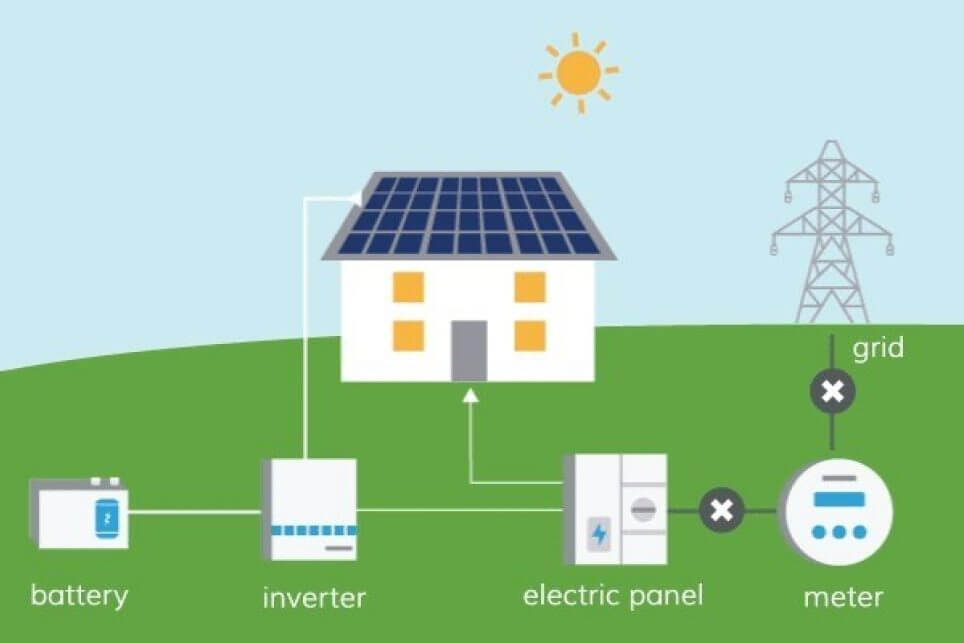Due to the harmful effects of fossil fuels on the environment, many governments worldwide encourage the adoption of renewable energy sources. In recent years, there’s been increased electricity generation from these cleaner sources, including solar, wind, water, tidal, and biomass. The question is; how does solar power compare to other renewables?
How Solar Energy Works
If you want to harness energy from the sun, you need to invest in solar panels. These panels have photovoltaic cells that convert photons from the sun into electricity. This energy can be used to power appliances directly or stored in batteries for later use.
The following section discusses how solar energy compares to other renewable energy sources.
Solar vs. Wind
The wind is an old renewable energy source. Regardless, this technology still has numerous challenges.
Although it’s cheap to generate power because the wind is free, the challenge lies in turbine maintenance. You need to continually inspect them to ensure they’re in prime condition, which isn’t the case with solar panels.
Additionally, most wind farms are in distant locations. As such, consumers have to pay more to ensure that the electricity reaches their homes. Lastly, wind turbines are noisy.
Solar vs. Hydroelectric Power
Hydroelectric power is the most widespread renewable energy source. Despite its effectiveness, setting up a hydroelectric power station is expensive. This is because you need to construct a large dam.
Moreover, the construction of dams can have adverse effects on an ecosystem. For instance, the diversion of water might destroy the habitat for fish and water plants.
Another problem with hydroelectric power is that it requires a constant water supply. When an area experiences drought, power outages become more frequent.
Contrarily, solar panels don’t affect an area’s ecosystem. You also don’t need to construct anything, as they will work as long as you have a proper roof.
Solar vs. Tidal Energy
As the name suggests, tidal energy relies on tides to turn turbines and produce electricity. It is superior to hydroelectric systems because oceans aren’t affected by droughts. Also, it has zero carbon emissions.
However, tidal energy is only available in coastal regions. Unlike solar energy, it isn’t a practical option for people living in the countryside.
Solar vs. Biomass Energy
Biomass isn’t entirely green, but it’s more environmentally friendly than generating electricity from fossil fuels. This form of power generation involves burning plants, wood, waste, and landfill gases.
Unfortunately, combustion produces harmful gases like carbon monoxide and nitrogen oxides. The harvesting and transportation of the materials used to generate the energy also rely on machines powered by fossil fuels.
Furthermore, you need a lot of water and plant waste to generate biomass energy. This points at potential deforestation, which hurts the environment.
Contrariwise, solar panels don’t emit any poisonous gases into the atmosphere. Even better, they don’t require huge chunks of land, as they can sit comfortably on your roof.
Final Words: Why Solar is the Best
Solar energy is the greatest renewable energy source. Why? First, the price of solar panels is reducing, and they’re now more affordable than ever. Second, the sun is the most abundant natural resource – unlike other renewables that require water or strong winds, solar relies on the sun, which is available in most places. Third, it saves you money by reducing your electricity bills. We’ve just discovered SpotDif which compares UK solar providers with the best prices.
Lastly, solar technology is improving rapidly and has a promising future. This is why governments are offering subsidies and incentives to people who transition from fossil fuels to renewable energy sources. Billionaires like Elon Musk are also investing their money into this sector. If you are still to adopt the technology, at least do it for the sake of future generations, as it is eco-friendly.
Follow Techdee for more!
